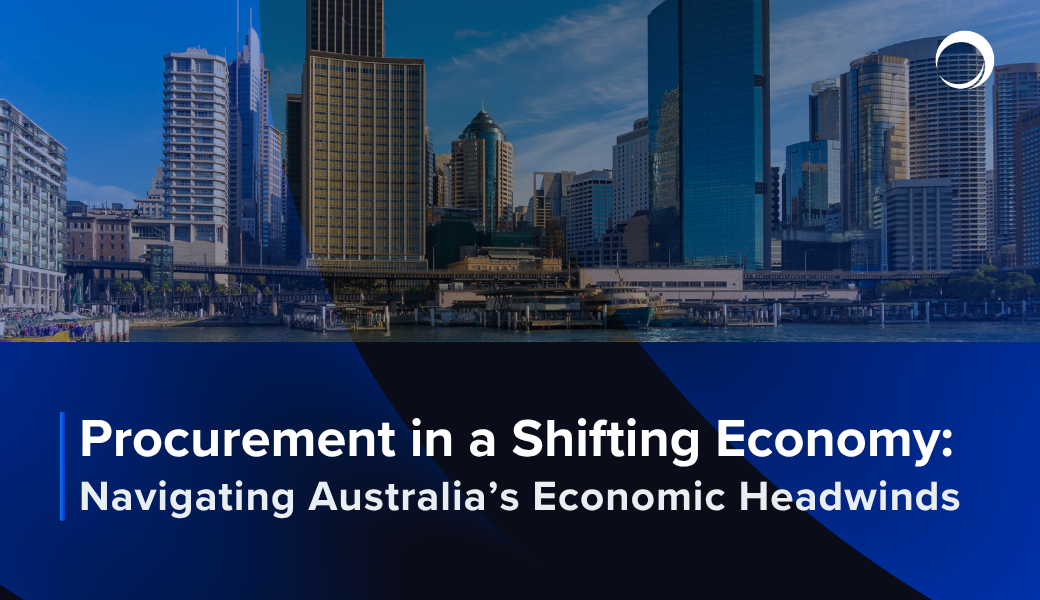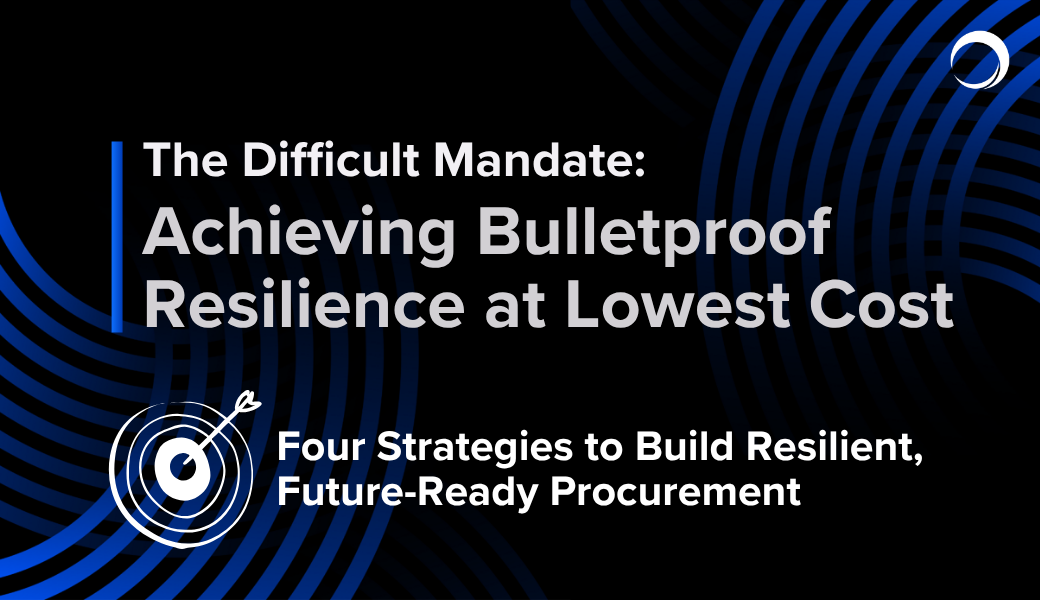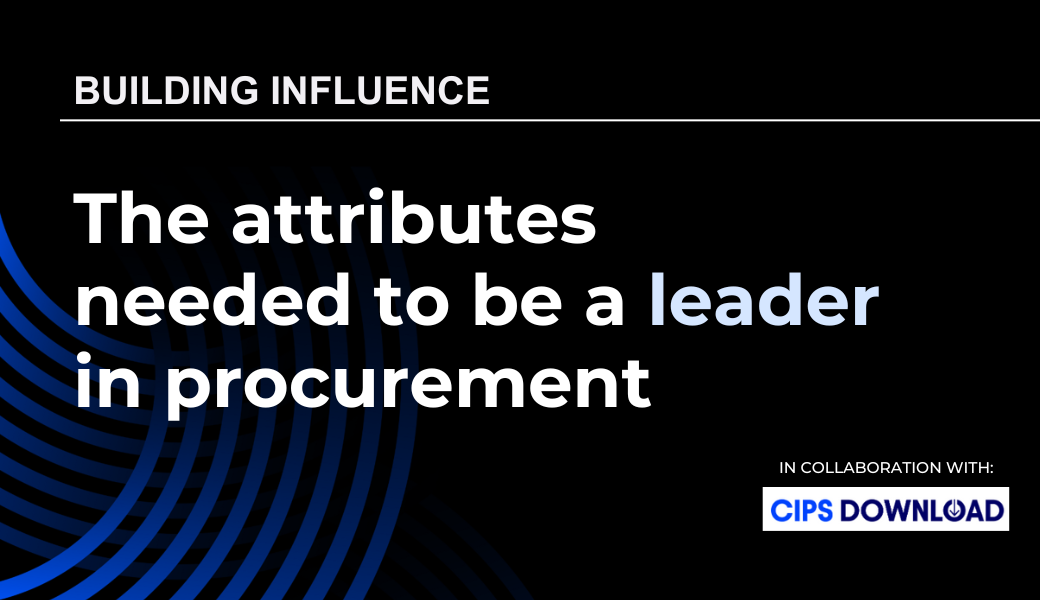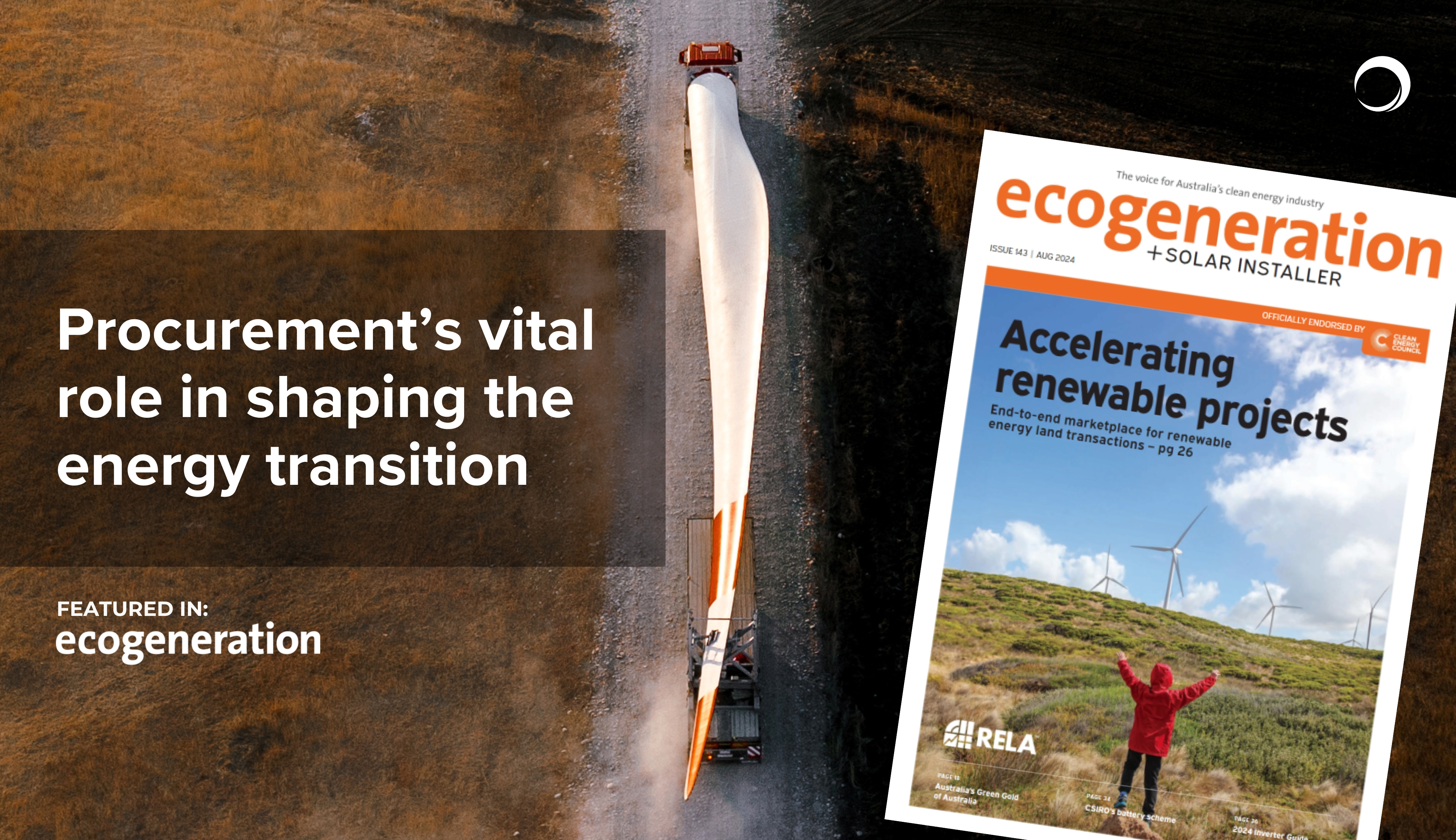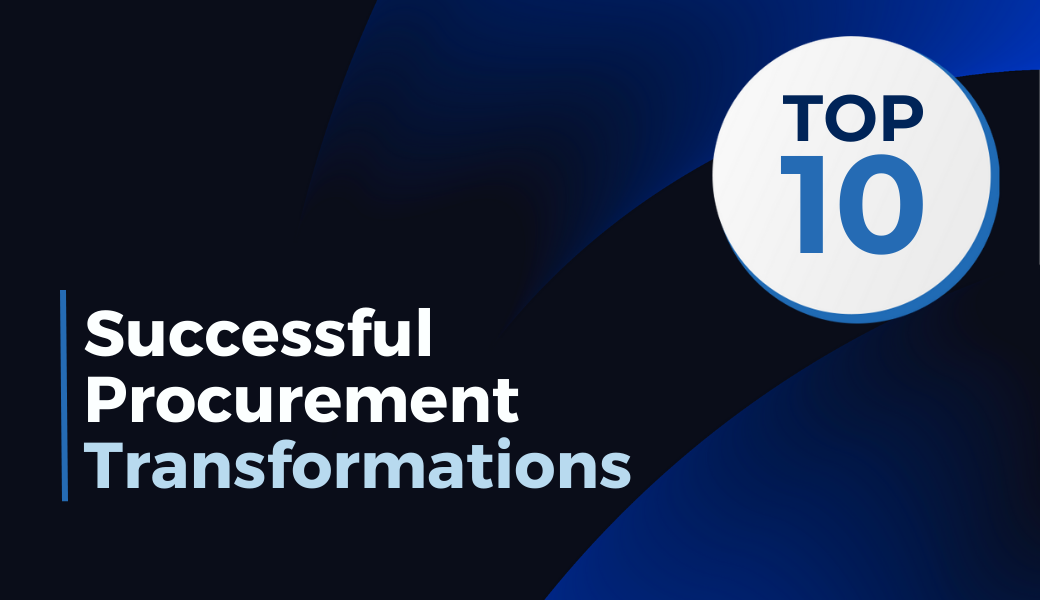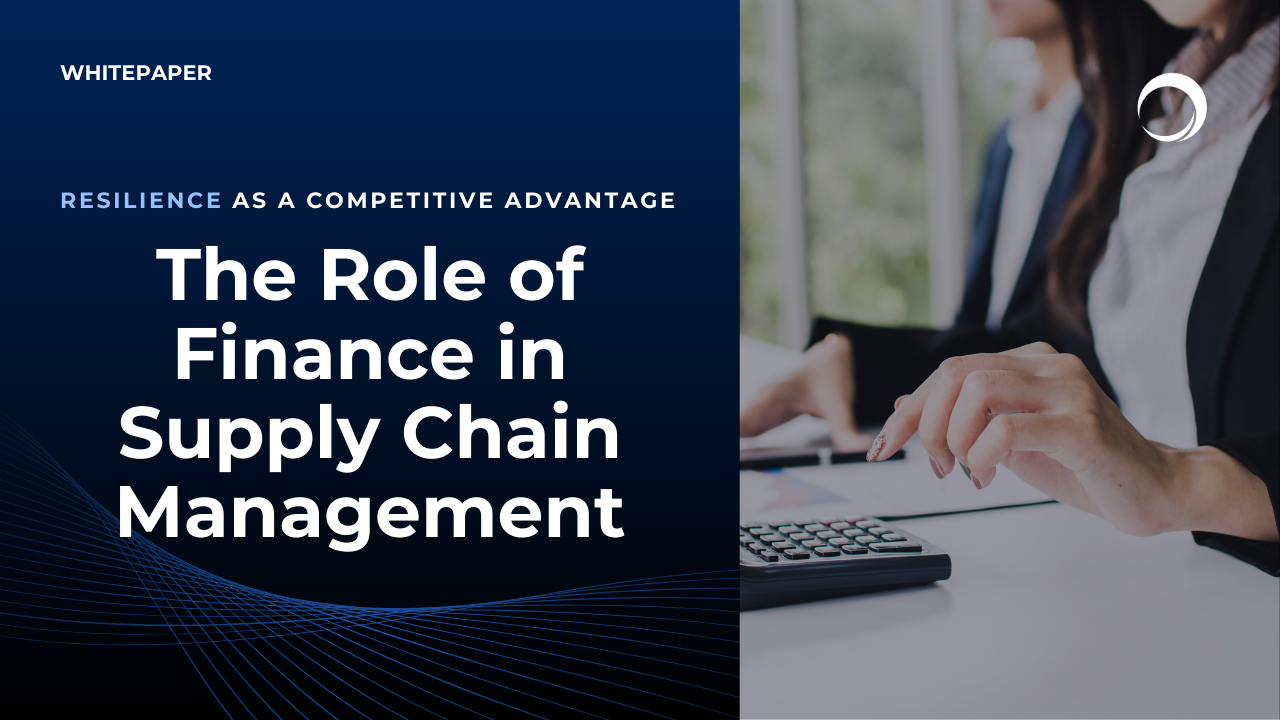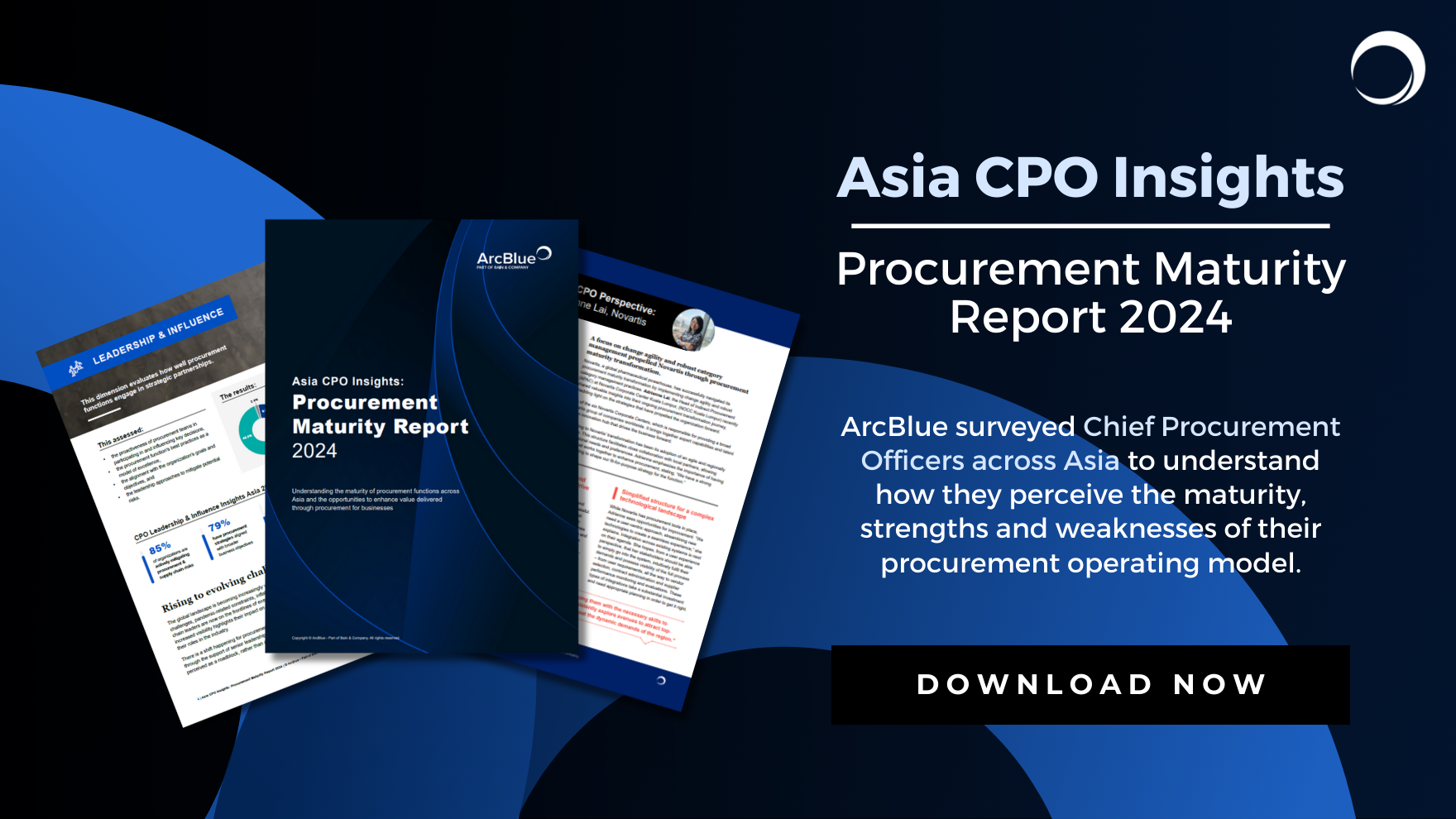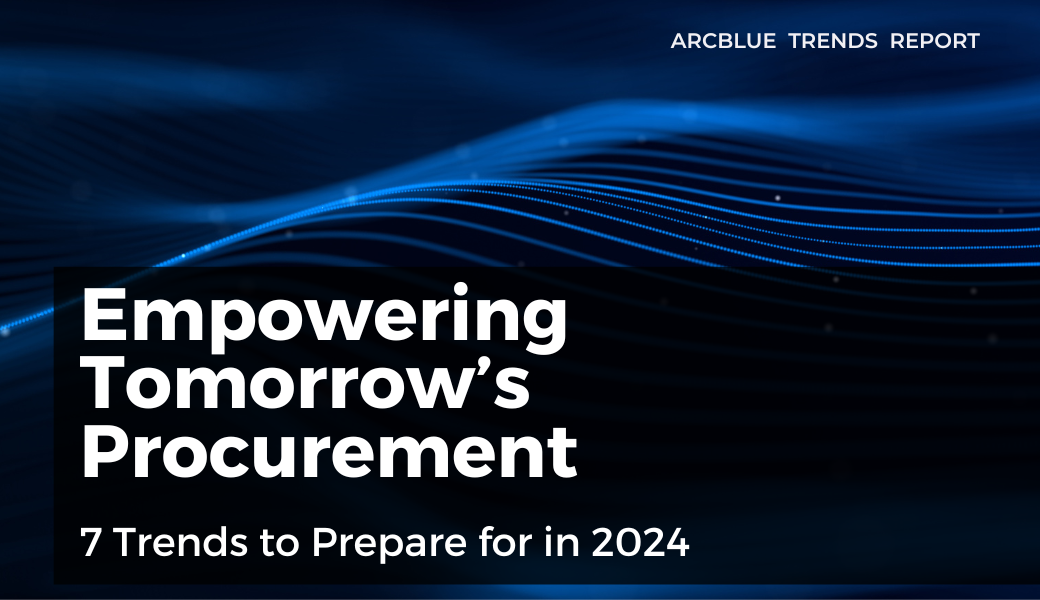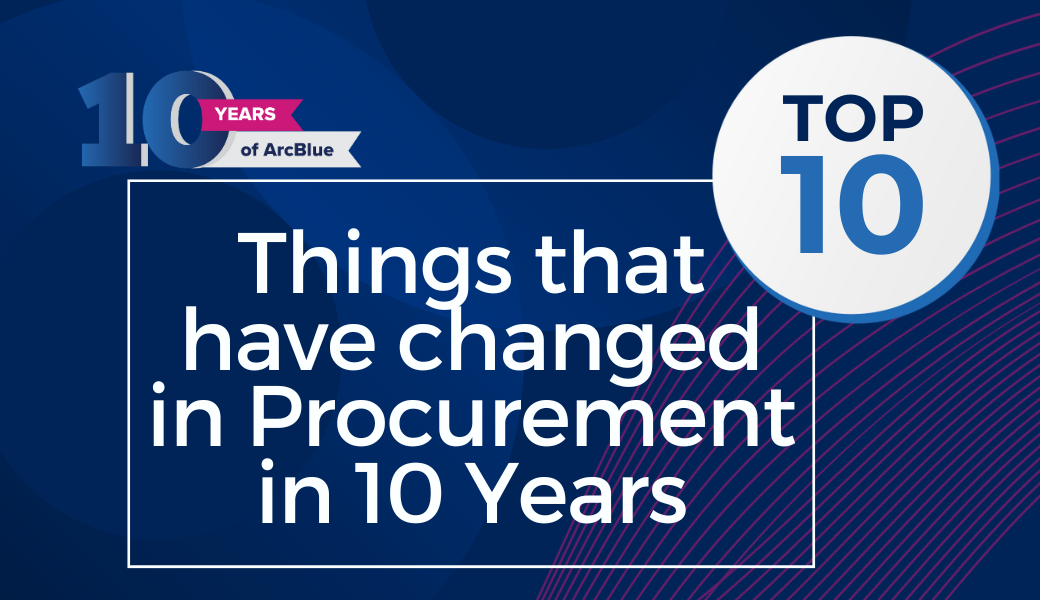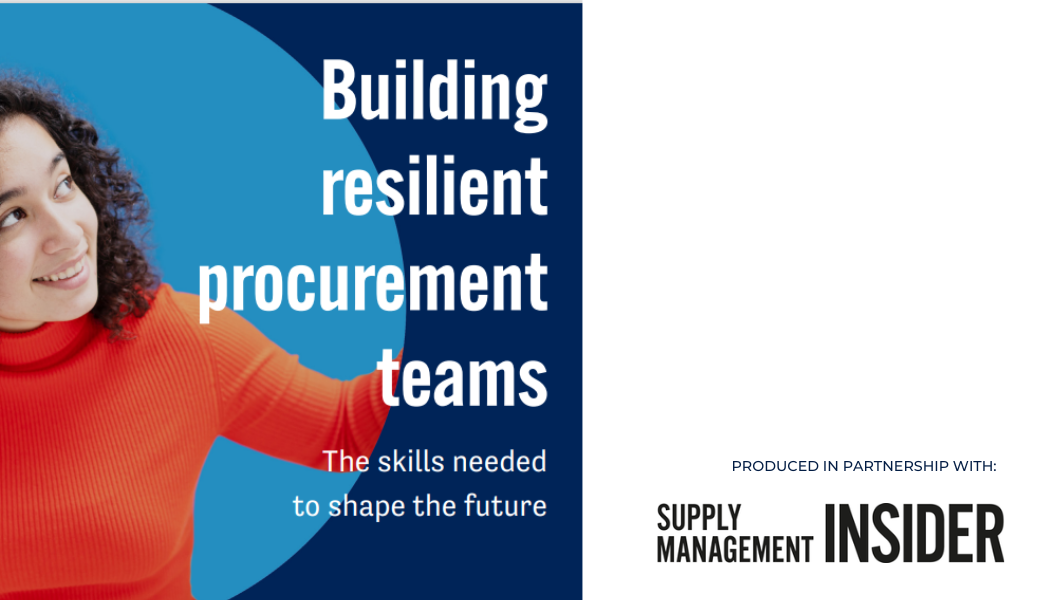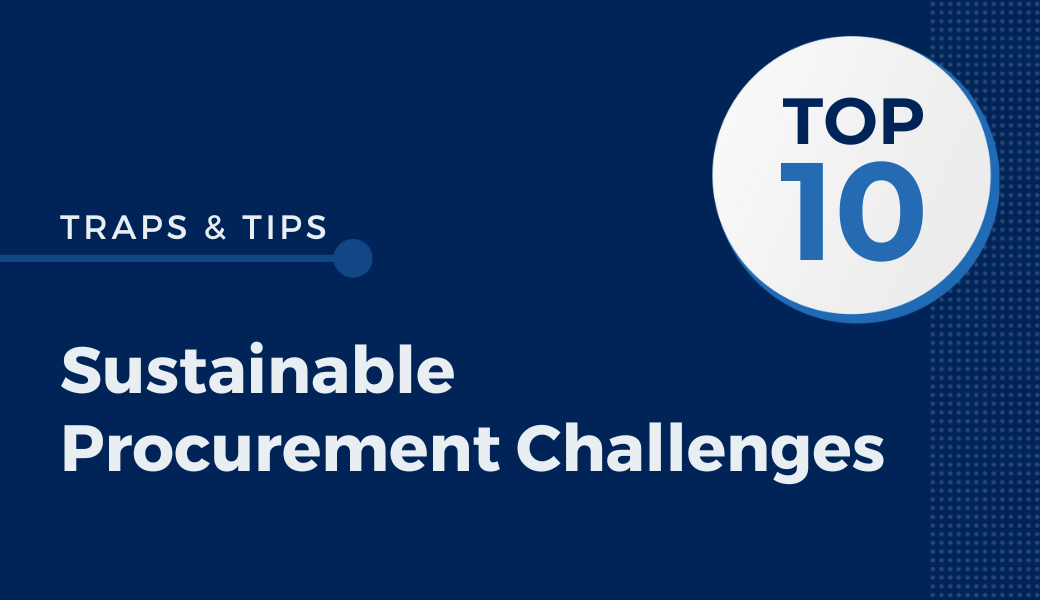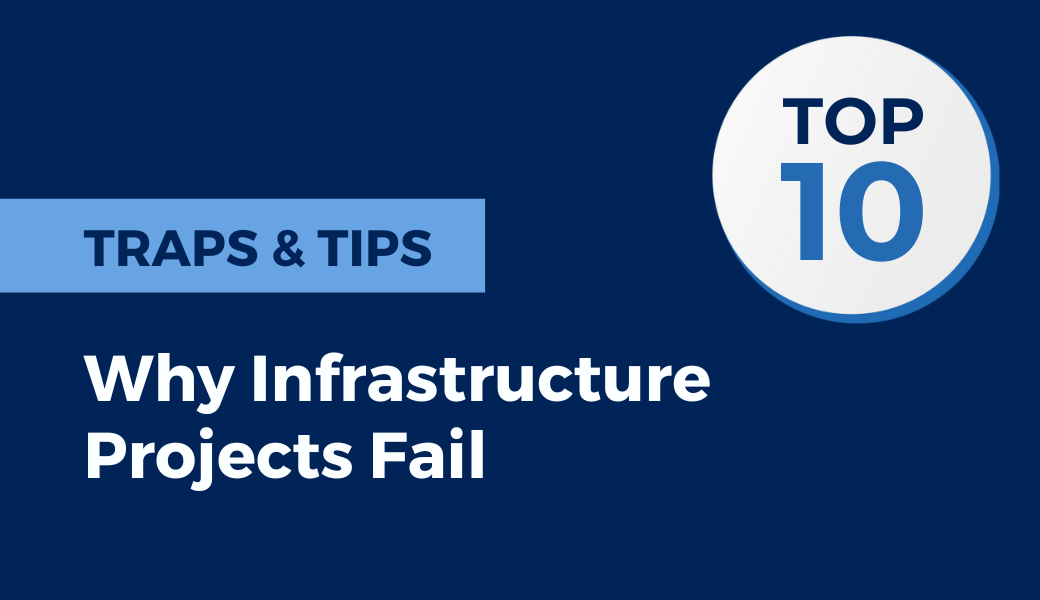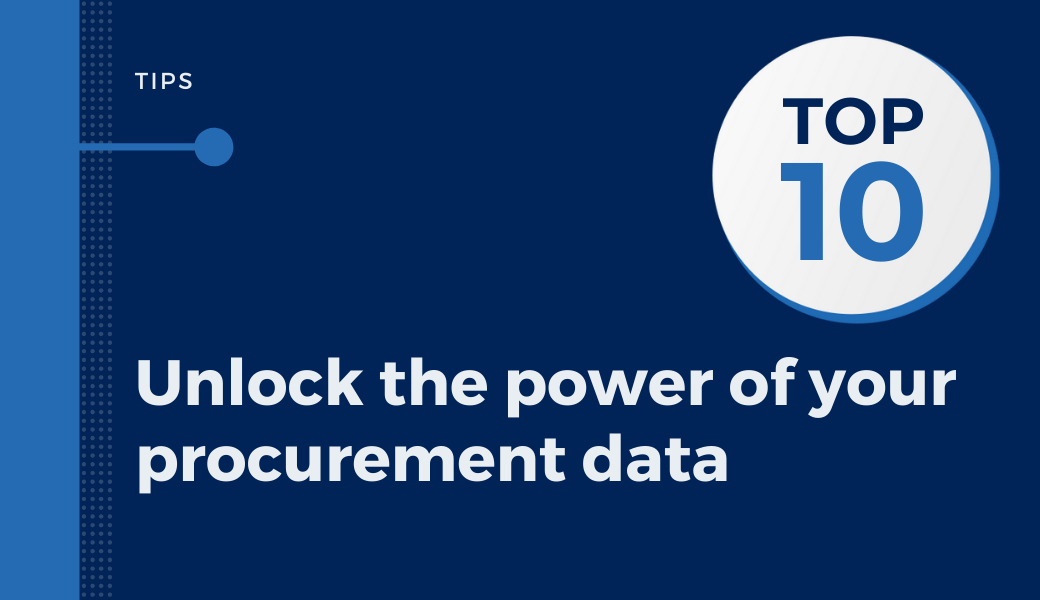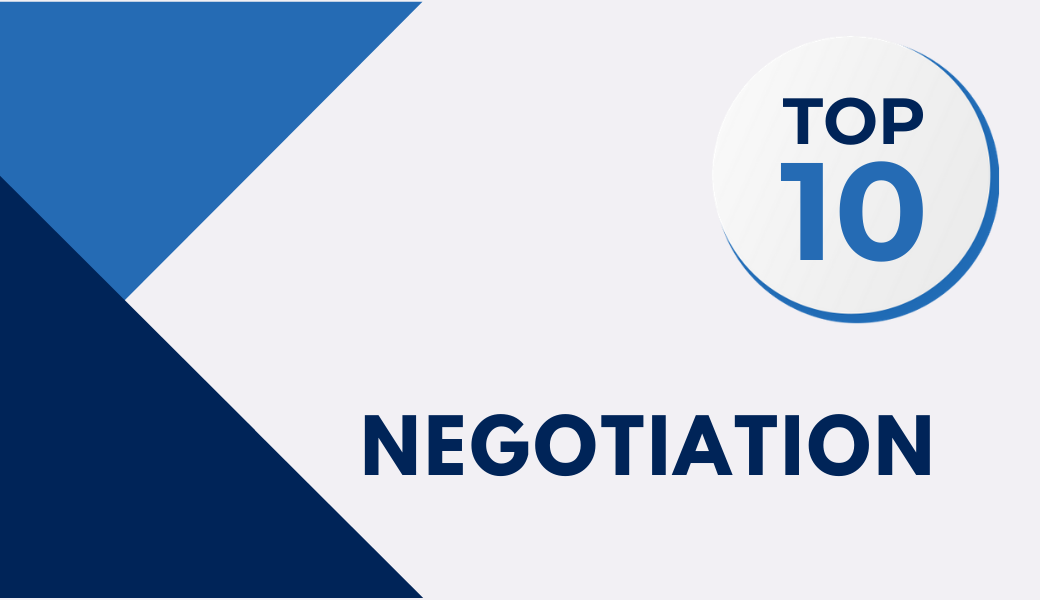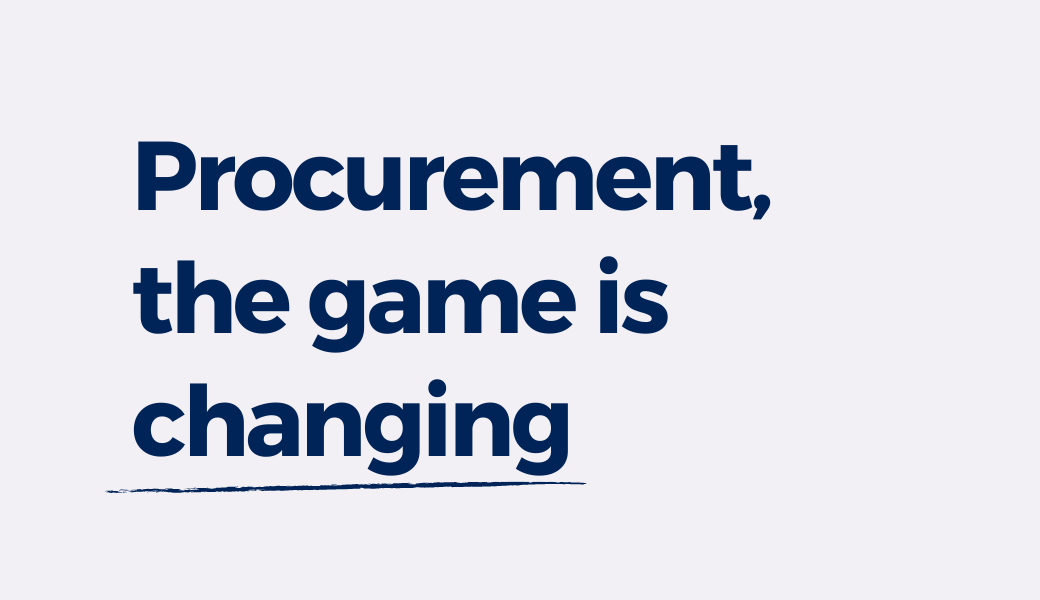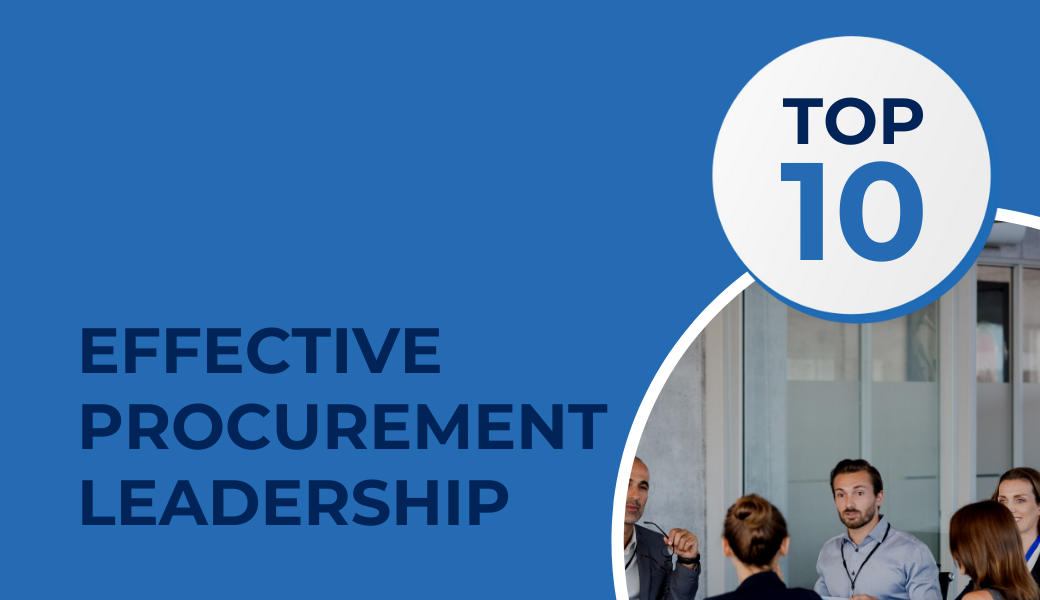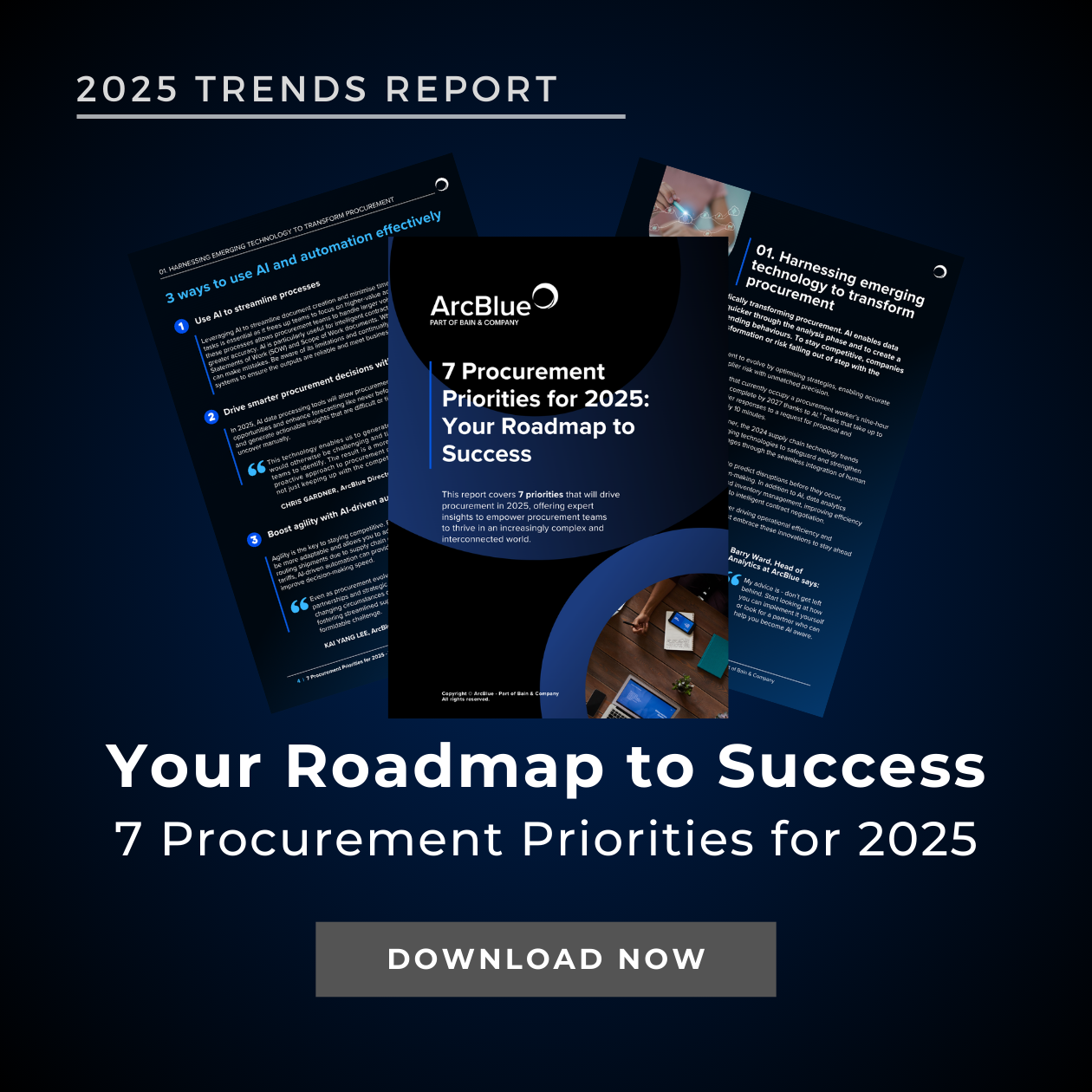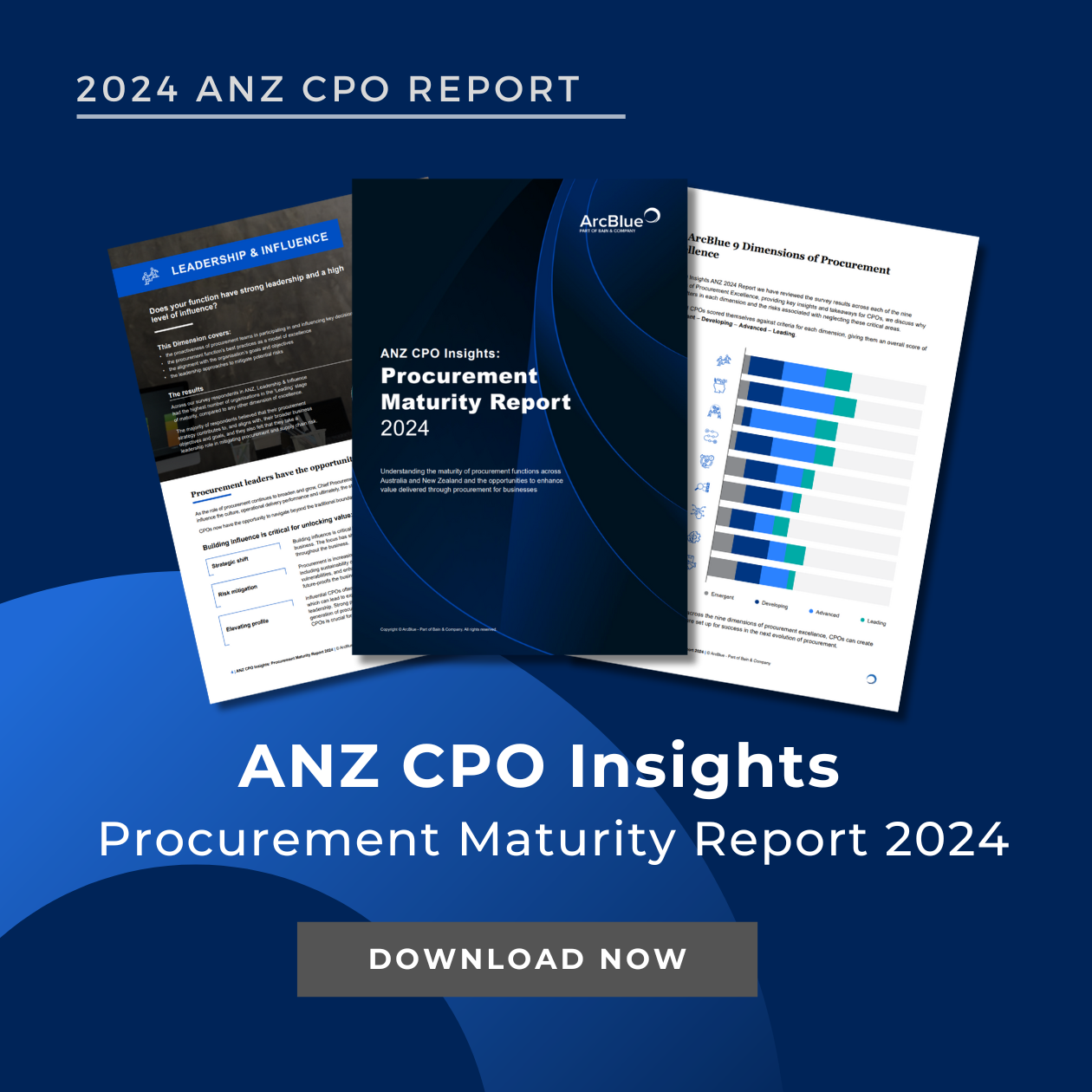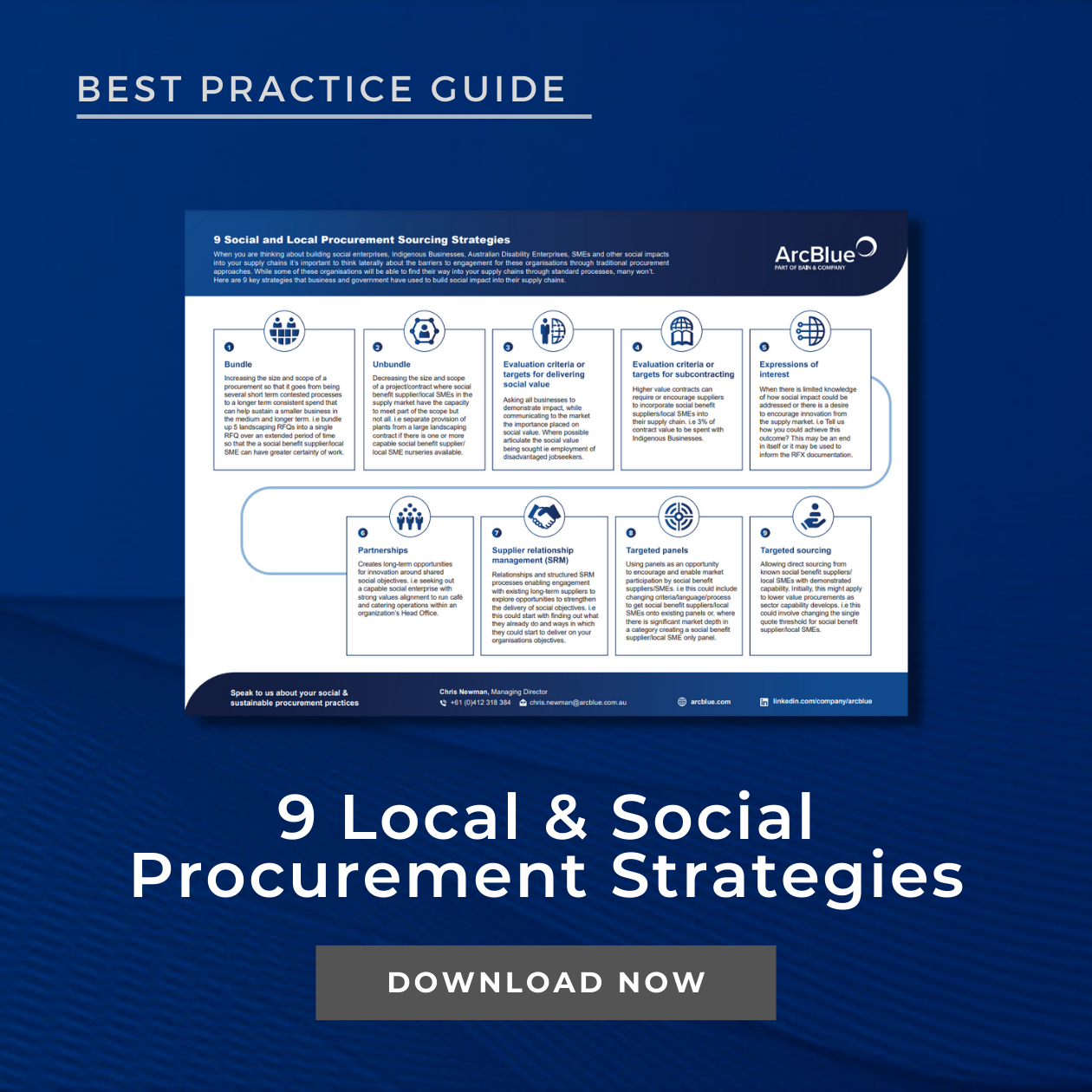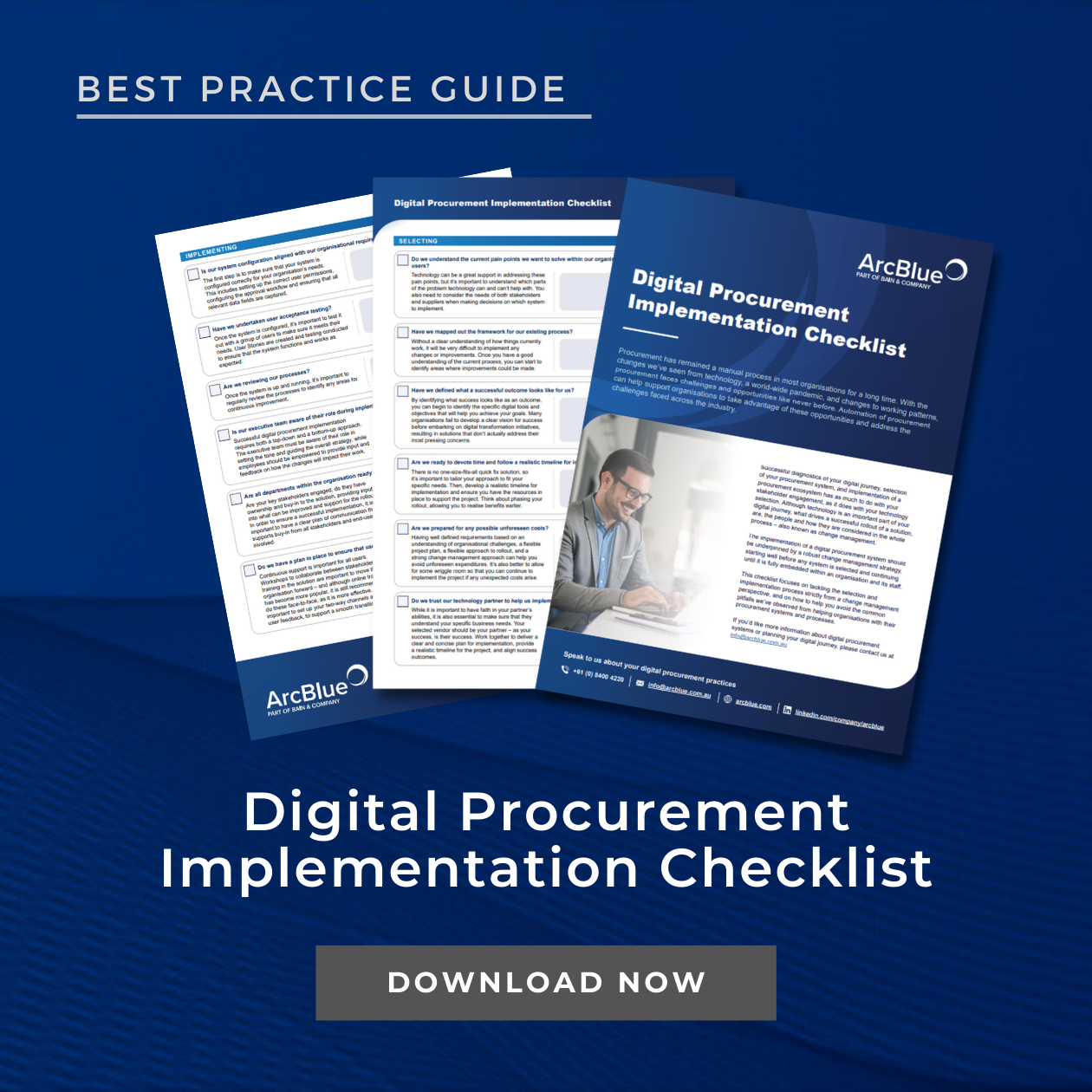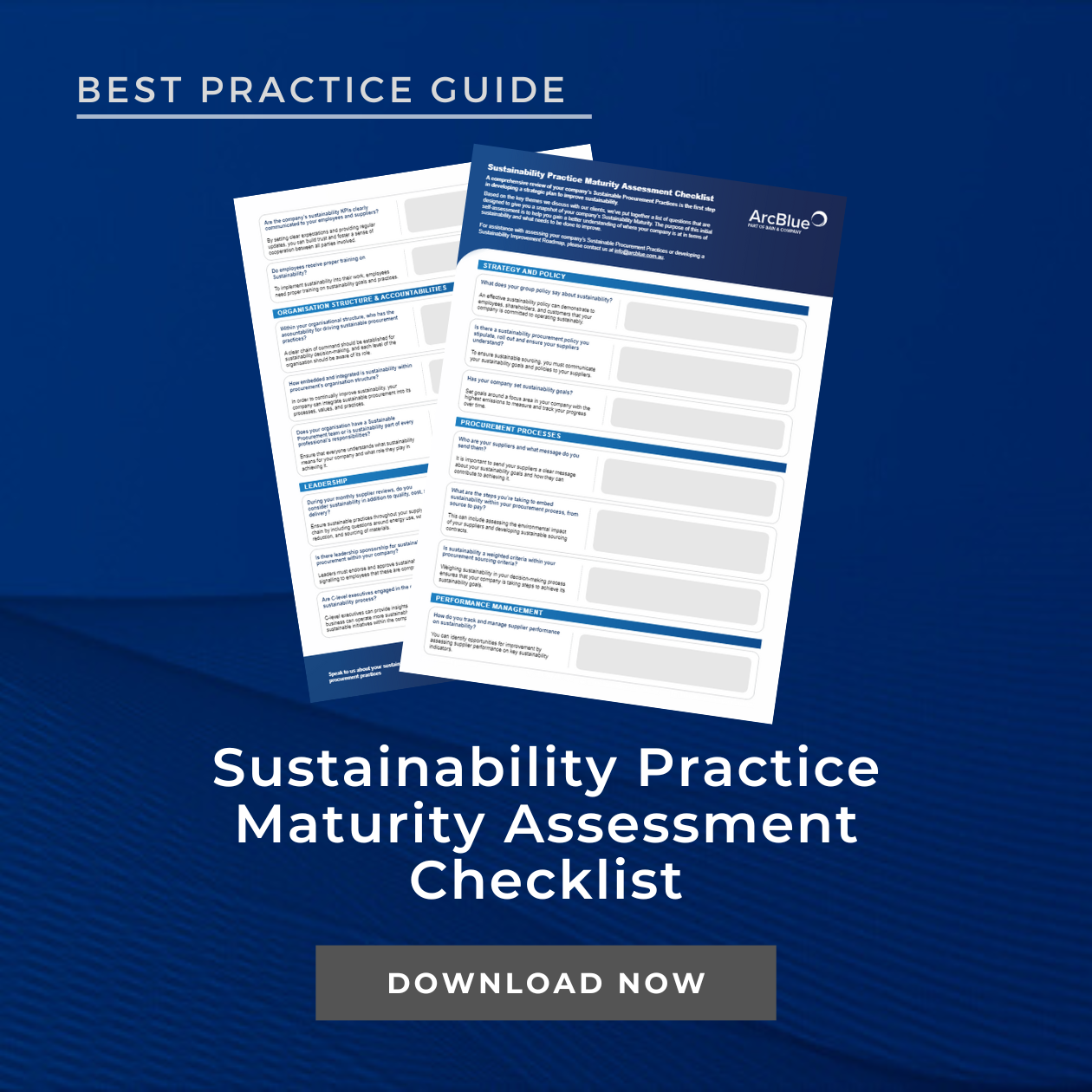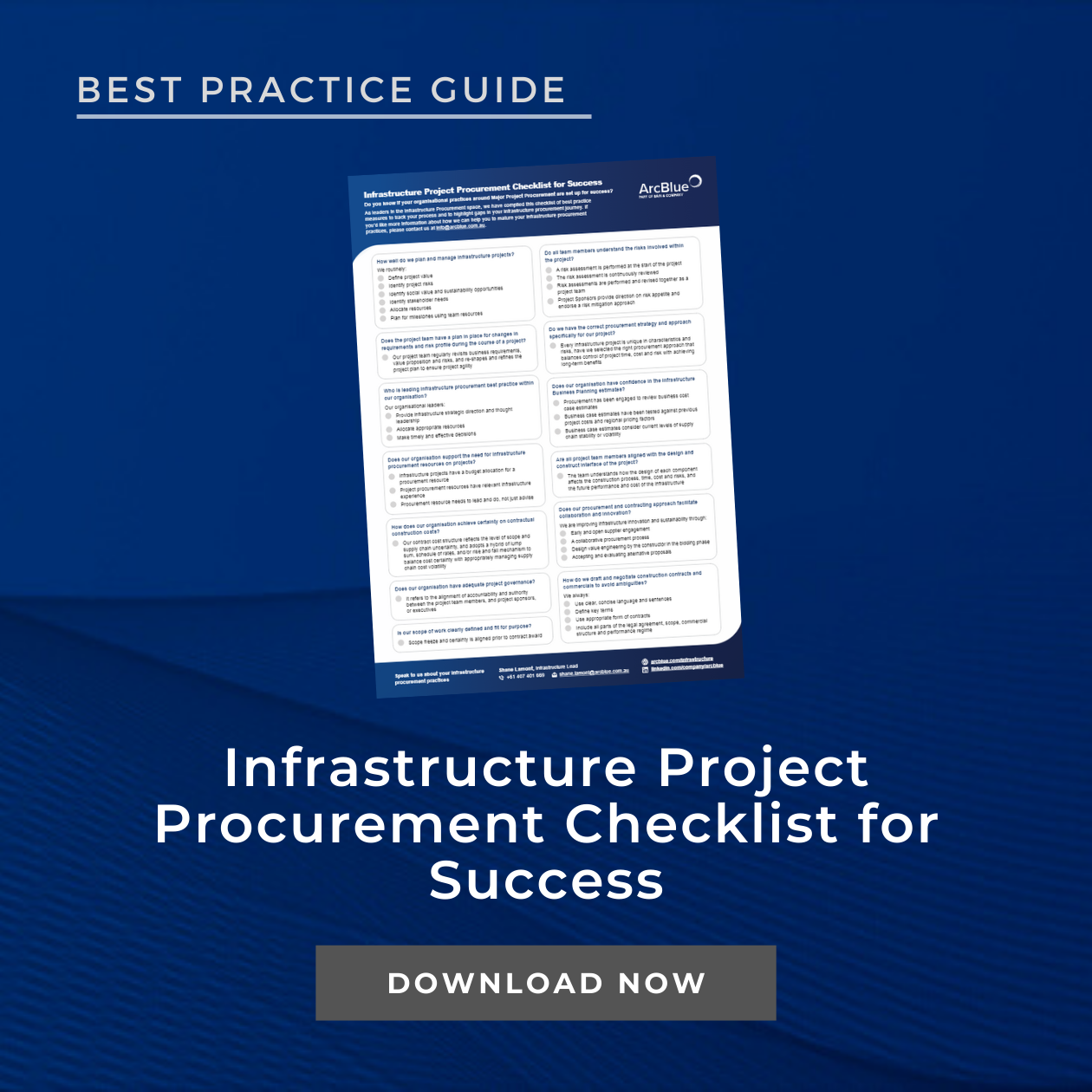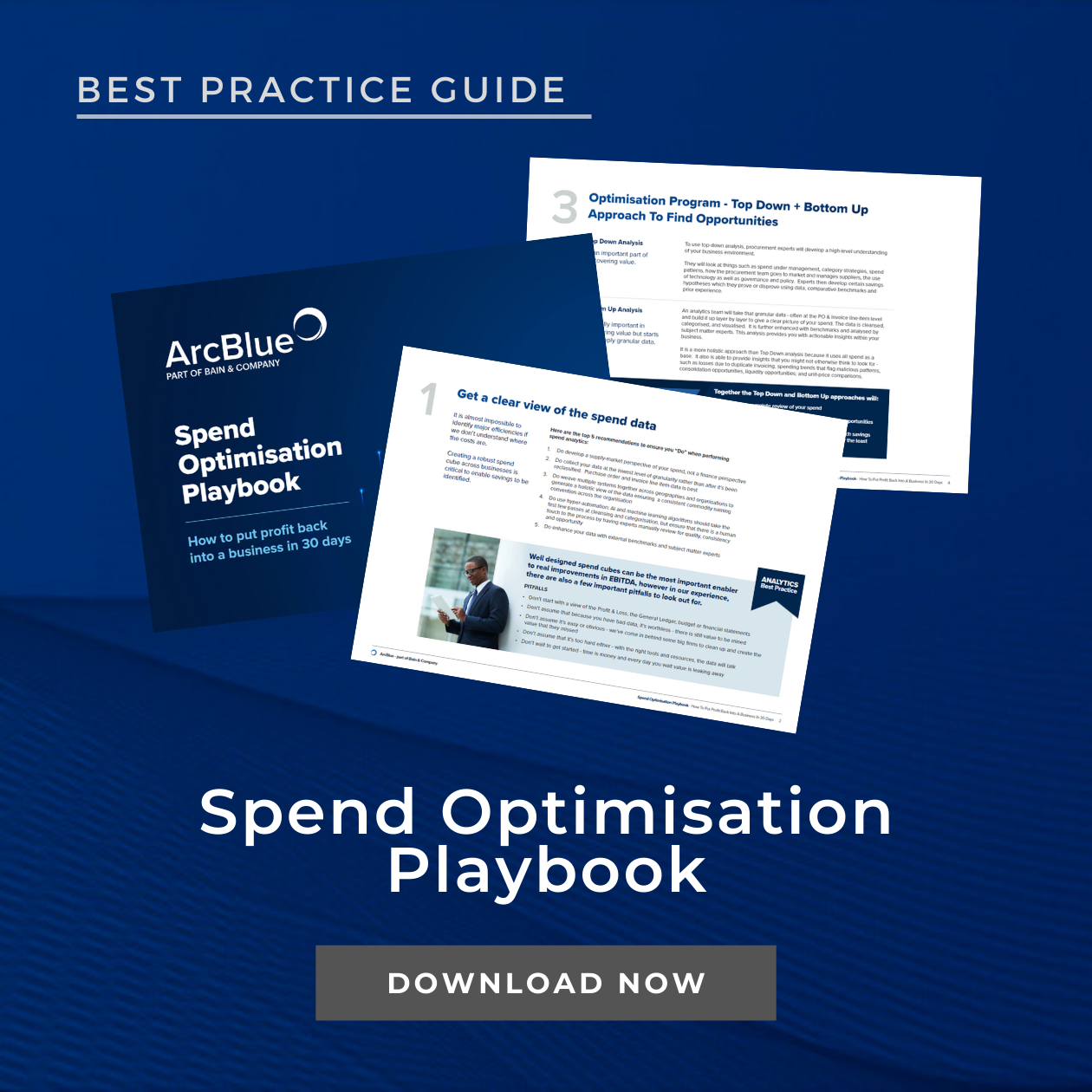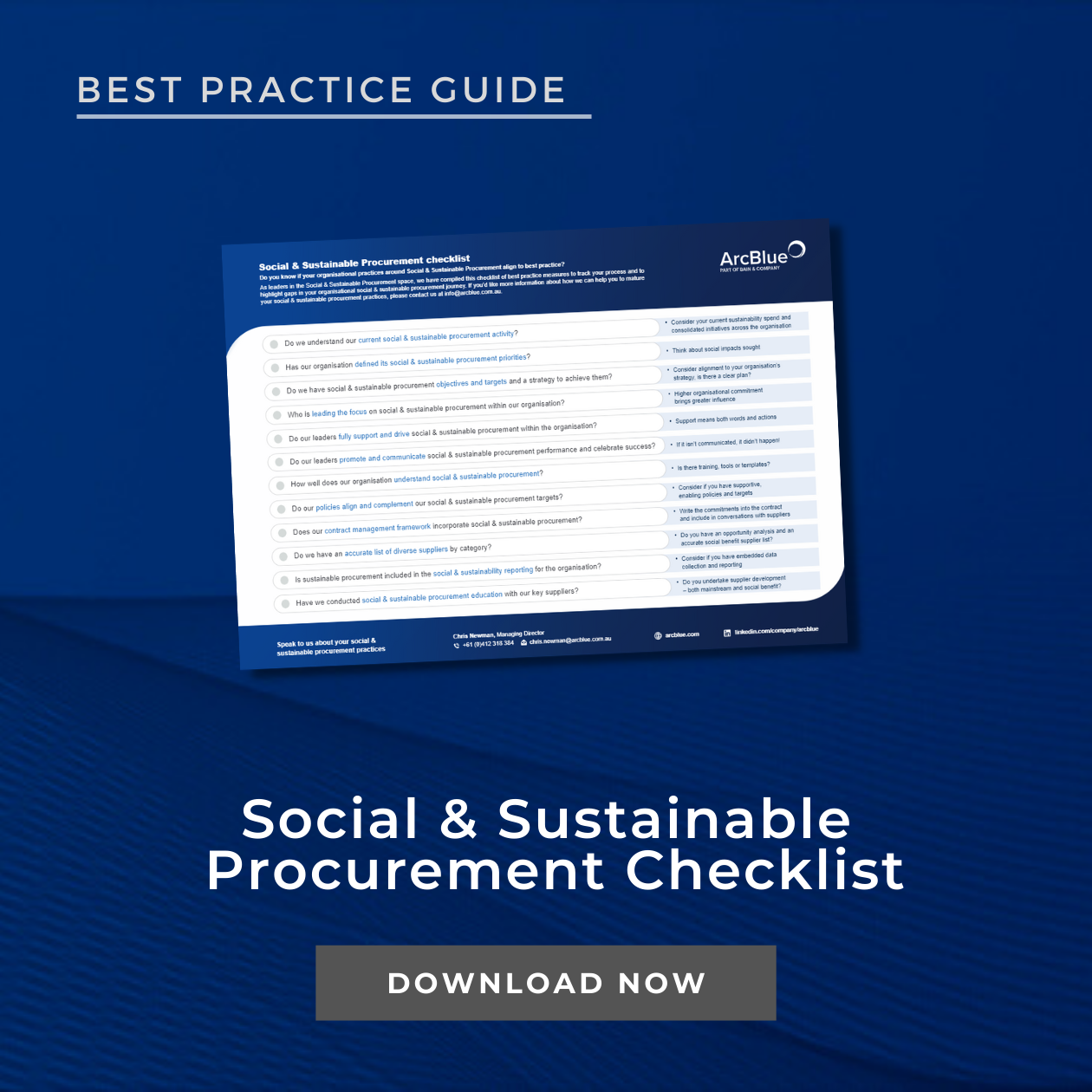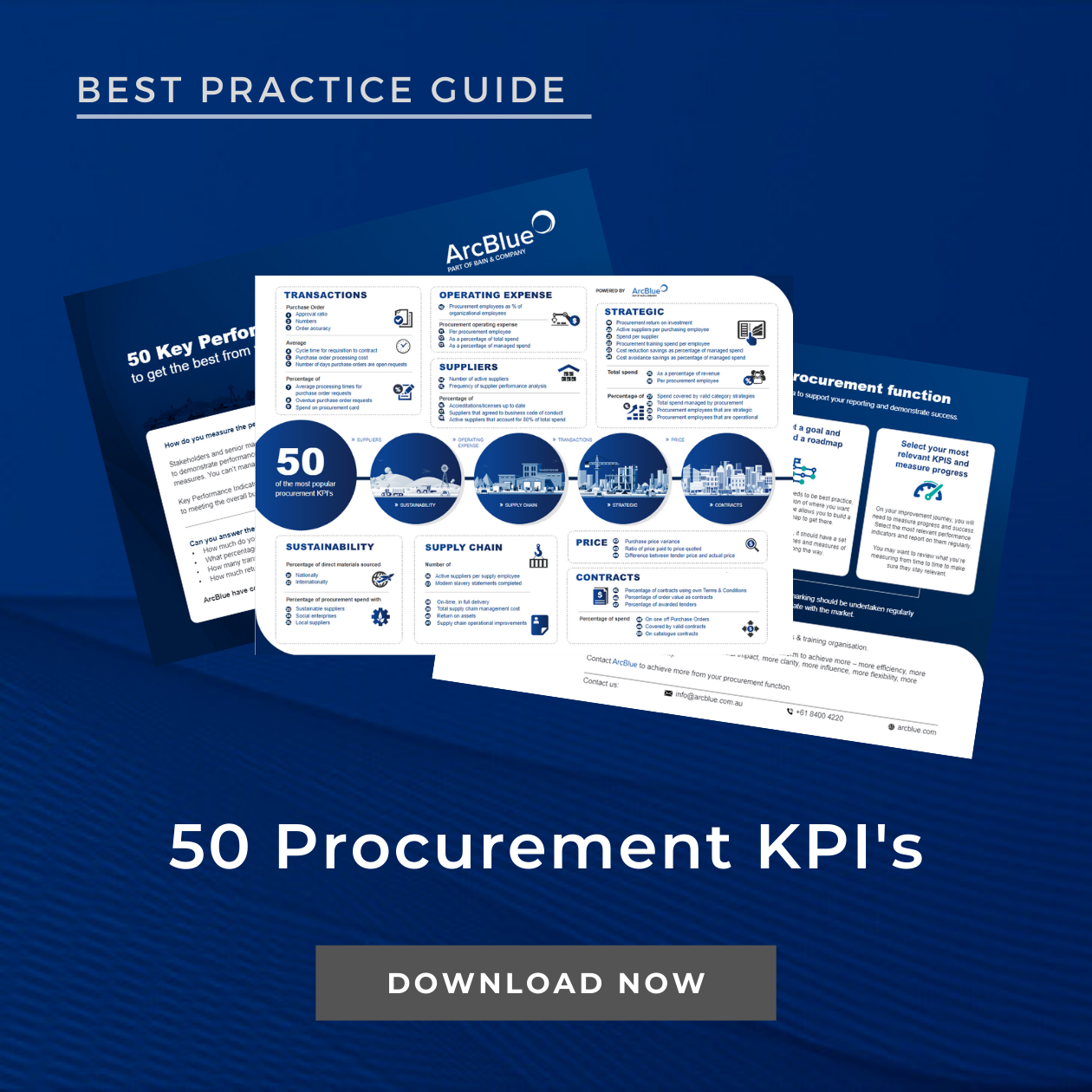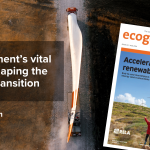- WHITEPAPER
Evolution of the Aerospace Procurement and Supply Chain Landscape:
Navigating volatility and changes in the Aerospace industry
August 2024
In today’s business environment, aerospace procurement and supply chain leaders are dealing with unpredictable and complex challenges. These disruptions have significantly transformed the landscape, pushing them to rethink their strategies to stay strong and sustainable.
ArcBlue’s Director for Southeast Asia, Chris Hampden, explores how recent events have impacted aerospace companies and how suppliers to the aerospace industry can enhance their positions in the market.

The Current Business Environment
The aerospace industry is navigating through a period marked by increased frequency and intensity of supply chain disruptions. Events from 2011 to 2023 have highlighted the vulnerability of global supply chains to natural disasters, geopolitical tensions, economic fluctuations, and pandemics. Notable disruptions include:
These events have caused a ripple effect, leading to prolonged recovery times and increased costs, profoundly impacting global supply chains and financial performance.
Impact on Financial Performance
Supply chain issues have a significant financial impact. Over three years, companies affected by these disruptions experienced an average sales decrease of 7% and a cost increase of 11%¹.
For instance, the COVID-19 pandemic resulted in a sharp decline in shareholder returns, with stock prices not recovering for months after the initial disruptions.
The cumulative effect of these shocks highlights the critical need for resilient and agile supply chain strategies.
Operational Disruptions
Major operational risks bring various challenges, each with significant recovery times and impacts.
- Manufacturing disruptions, such as the Suez Canal blockage crisis in March 2021, typically require over six months for recovery.
- Inventory flow disruptions usually take about two months to resolve.
- Labor shortages, exemplified by the ongoing US truck driver shortage since 2020, can take many years to remedy.
- Demand spikes, like the 29% year-over-year increase in US pet care demand in 2020, can take over a year to stabilize.
- Sourcing and input challenges, such as the chip shortage affecting manufacturing in 2021, led to a drop of about 7 million vehicles in production compared to 2020 estimates, with recovery taking over a year.
- Price increases, spurred by events like the war in Ukraine in 2022, caused over 24% year-over-year increases in spot prices, with recovery times around eight months and approximately USD 9 billion worth of goods held up daily.
These disruptions underscore the importance of robust risk management and solid contingency planning.
Strengthening Aerospace Industry Resilience
Global commercial aviation demand has shown a strong recovery from significant disruptions, such as the COVID-19 pandemic and the grounding of Boeing 737 MAX aircraft.
This recovery, measured in Revenue Passenger Kilometers (RPK), is expected to continue its upward trajectory. However, despite the increase in passenger demand, the aerospace supply chain has struggled to keep pace.
Challenges such as raw material shortages, reduced investment in machinery by suppliers, a decimated talent base, and increased costs for materials and labor have contributed to production delays and high costs.
These issues highlight the need for adaptability and innovation to meet growing demand and maintain operational efficiency.
Industry Leader Insights
As the aerospace industry grapples with the challenges of supply chain recovery, key industry leaders have voiced their concerns and insights on the situation.
Guillaume Faury, CEO of Airbus
We recognize all these ups and downs and all the challenges in the supply chain and are damping the ramp-up significantly in the next years to reach rate 75 in 2027.²
Mark Stewart, Senior VP of Lockheed Martin
Better understanding risks and opportunities throughout the supply chain allows us to manage our supply more comprehensively. It’s about leveraging where we are common, regardless of where we operate or what we make.⁴
William Ampofo, VP of Boeing
There continue to be constraints in the supply chain, but we’re seeing light at the end of the tunnel. There are still challenges with raw material and labor, especially labor.³
Larry Culp, CEO of GE Aviation
There’s no question that with rates where they are we’ve seen some suppliers challenged financially. But there also are a host of other issues we’re working with our suppliers on.⁵
These perspectives collectively emphasize the critical need for strategic adjustments in the aerospace supply chain to meet rising demands and mitigate ongoing disruptions.

Navigating Disruptions and Ensuring Delivery
The aerospace industry is experiencing growing pains as its complex supply chain struggles to meet rising demand. Costs are a major pressure point, and the scarcity of raw materials has led to significant price hikes. Efforts to prop up financially vulnerable suppliers have added to the financial challenges. Travel to manage suppliers and the need for additional on-site labor have further inflated assembly costs. Unfortunately, this pressure often translates to quality issues, with rejected parts adding to inefficiencies.
There is light at the end of the runway, however. Suppliers who are consistent with delivering their commitments and navigating these disruptions will be well-positioned to thrive. Collaboration across the supply chain is essential to overcome these challenges and ensure a stronger future for the industry.
Enhancing Resilience and Sustainability
Historical vs. New Priorities
Traditionally, procurement and supply chain leaders focused on building global supply chains to achieve the lowest possible costs. This often meant minimizing inventory through lean operations and leveraging volume through single-sourcing.
Today, however, procurement and supply chain leaders recognize the need for a more balanced approach. They are shifting their focus to building resilient supply chains that can withstand disruptions. This includes balancing global with regional sources, optimizing inventory levels and diversifying suppliers to mitigate risk.
New World Priorities
Procurement and supply chain leaders must consider additional factors that were not previously given as much weight. These include:
1. Sustainability
Companies are increasingly focusing on environmentally friendly practices throughout the supply chain.
2. Supply chain transparency
There is a growing need for greater visibility into all aspects of the supply chain.
3. Digital manufacturing
New technologies are being used to improve efficiency and agility in production processes.

What can aerospace suppliers do to enhance their position on:
RESILIENCY
- Be transparent with your customers & suppliers – Collaborate to strengthen partnerships.
- Diversify your supply chain – Don’t be overly dependent on any single source for critical components or processes.
- Proactively manage risks – Develop and stress test your business continuity plans.
- Build a resilient workforce – Invest in talent development programs, cross-train employees and create a culture of adaptability.
- Establish robust S&OP processes – Don’t try to second-guess demand forecasts.
SUSTAINABILITY
- Don’t wait to be asked – Start to understand the carbon footprint of your products.
- Optimise your manufacturing operations for efficiency & emissions reduction – Implement energy-efficient practices, use green energy sources, reduce waste.
- Embrace the circular economy – Design products for recyclability and reuse.
- Explore collaborations – Join industry initiatives, share best practices, and contribute to the development of common standards for sustainable aerospace practices.
- Traceability – Understand exactly what you are buying, who you are buying from and where materials come from.
INNOVATION
-
Collaborative product development – Engage your customers on technology and innovation requirements, and invest in capabilities that align.
-
Industry 4.0 – Integrate IoT technologies into aerospace components for smart and connected solutions, offering customers real-time monitoring, performance analytics, and predictive maintenance alerts.
-
Collaborate with start-ups & innovators – Leverage external expertise and fresh perspectives to drive disruptive innovations and stay ahead in a rapidly evolving aerospace landscape.
-
Explore the adoption of Generative AI – e.g. Analysis of technical drawings and creation of content database, predictive maintenance, customer chatbot.
-
Skills & training – Implement a capability program that is fit for the future.
Conclusion
The aerospace industry faces a transformative period where resilience, sustainability, and innovation are paramount.
By reevaluating and redesigning supply chain strategies and embracing more pressing priorities, procurement and supply chain leaders can navigate volatility and ensure long-term success.

References
¹ Note: Hendricks and Singhal (2003, 2005); based on study of >800 public announcements of supply chain disruption over a 10 year period, change in sales and change in costs are benchmarked against companies that are in the same industry w ith similar size and performance characteristics; 3 year period measured from 1 year prior to announcement to 2 years post announcement (p. 4)
² Source: Flottau, J., & Wall, R. (2024, July 11). Aviation Week. “Airbus CEO Says Company Is Managing Crises, One Supplier At A Time” (p. 5)
³ Source: Shay, L. A. (2023, July 14). Aviation Week. “Boeing Supply Chain Leader’s View Of The Parts Runway” (p. 5)
⁴ Source: Lockheed Martin. (2024). Supply chain resiliency. “Delivering Innovation Through Supply Chain Resiliency” (p. 5)
⁵ Source: Anselmo, J., & Norris, G. (2024, April 1). Aviation Week. “Daily memo: GE Aerospace chief sees no quick fixes for supply chain woes” (p. 5)
INSIGHTS
RESOURCES & DOWNLOADS






